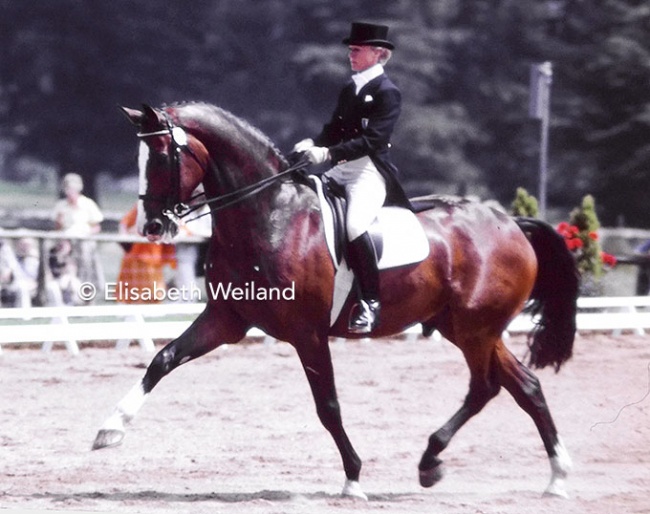
Rather early in the season of 1987, the European Championships took place on 8 - 12 July 1987. After the 1978 World Championships and the 1980 Olympic Festival, the beautifully located Goodwood in the South of England once again had the honour of hosting an FEI championships.
Stately Setting
This show, which was launched in 1973, soon became one of the favourites of international dressage and there was great regret when it finished at the beginning 1990s. Goodwood’s idyllically located arena in the midst of green parkland and near the 18th century old Goodwood House took care for a unique setting and relaxing atmosphere.
Thirty-eight riders and eight complete teams contested not only for European glory, but were also looking for a pre-Olympic positioning. Apart from the two classes which determined the European champions, an international small tour and Inter II as a kind of warm-up were offered for the championships horses.
The Title Favourites
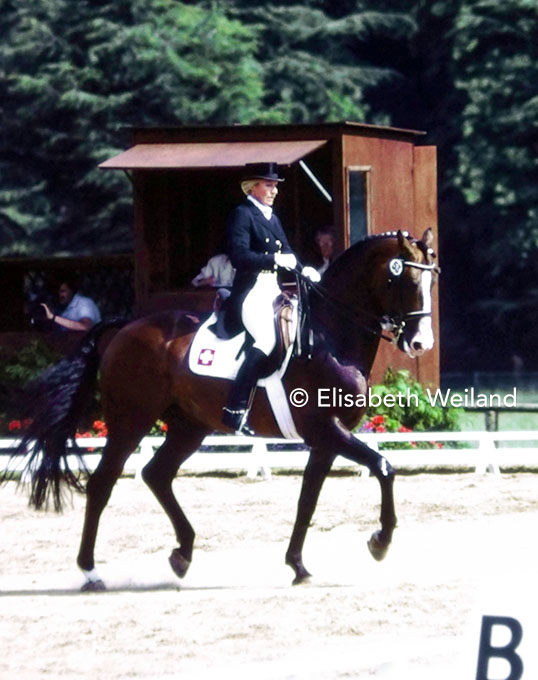
Title defender Ahlerich of Dr. Reiner Klimke had been out the whole season after having beaten Corlandus convincingly in Berlin in November 1986.
Marzog, the dominating horse of 1986, seemed past his prime, having been beaten in the 1987 World Cup finals in Essen by Gauguin de Lully and at the World Cup qualifier in Neumünster by Sonny Boy under George Theodorescu. At Goodwood the charming Danish warmblood whose elegance stamped dressage in the 1980s, could not be presented at the vet check due to lameness which was the end of the career of this enchanting horse.
Grand Prix
The Grand Prix results mirrored the head to head duel between Corlandus and Gauguin de Lully which had dominated the season so far.
In Goodwood the small but mighty bay Gauguin de Lully defeated the tall majestic Corlandus by a whisker, spearheading the Swiss’ attempt to finally beat Germany.
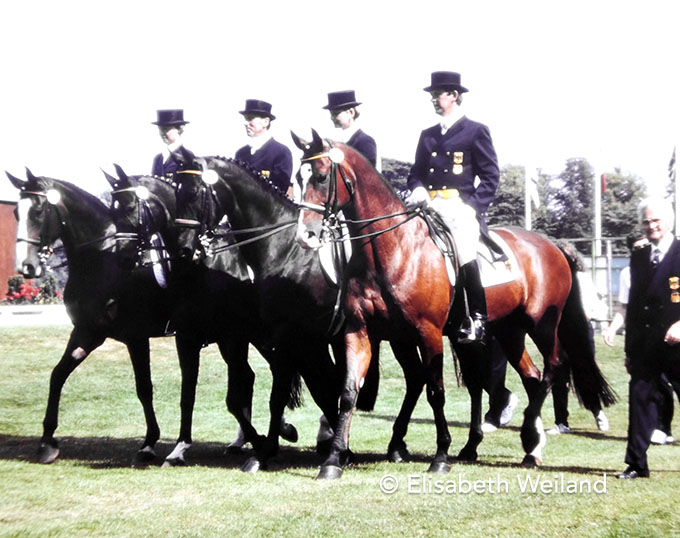
Team-wise all four Germans and three of the Swiss placed in the top 8, leaving Germany just 3 single points ahead of Switzerland which had never been and never came that close again. Germany had to rely on two new team horses, Courage and the Hessian bred Floriano (by Fiothor) of Herbert Krug.
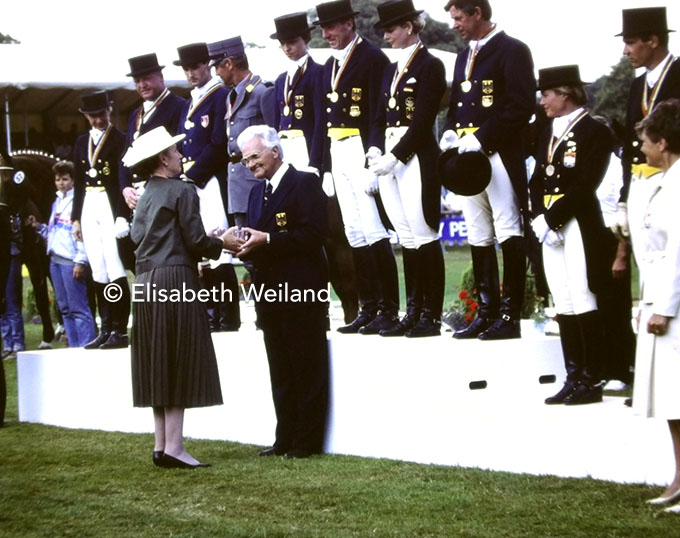
The fourth placed French team, which was just 22 points behind bronze, almost entirely based this success on the outstanding performance of Corlandus, as the other team riders only placed 23rd, 32nd and 35th of 38 starters.
In seventh place the first ever Finnish team which was led by Kyra Kyrklund and her young Danish bred stallion Matador (by May Sherif) who made the cut for the Grand Prix Special.
Grand Prix Special
After the course of the season and after the Grand Prix in Goodwood, it was crystal clear that the individual medals would be distributed between the Swiss, the Germans and France’s flagship, the late Margit Otto-Crépin.
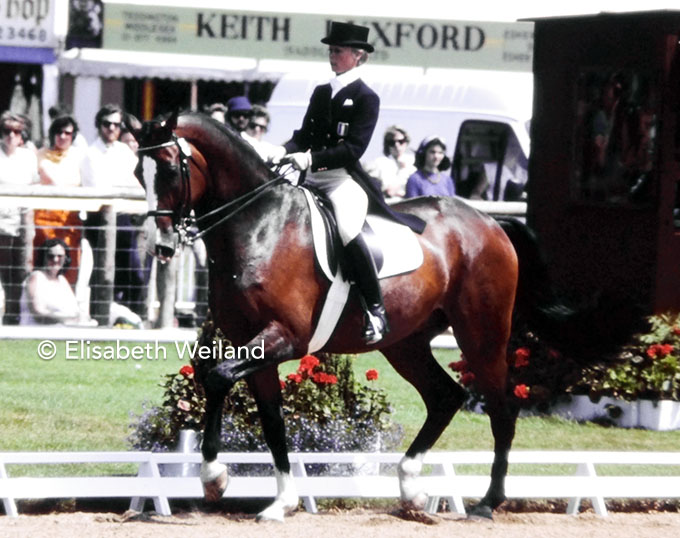
A member of the British team for many years with the small and very charming Belgian bred gelding Pinocchio (by Magneet), Bartle-Wilson remained in the shadow of her brother Christopher and his Irish gelding Wily Trout, who was retired in a ceremony during these European championships. In the autumn of his career, Pinocchio, a chestnut with a lot of white, made the ride-off which he had missed a year before at the World Championships by just one place.
After winning the Grand Prix, Christine Stückelberger went for a third European title, having won already in 1975 and 1977. However it was not to be. Her main rival, Margit Otto-Crépin, presented the tall and yet incredibly light-footed Holsteiner gelding Corlandus with such brilliance that their victory was never in danger. There was a sixty-one points' difference between the French and the surprise of the Special in silver position, Ann-Kathrin Linsenhoff. Her dark-brown Swedish gelding Courage achieved respectable results in the shows leading up to Goodwood, but the silver in Linsenhoff’s first senior championship was rather unexpected. At 14 years of age, Courage came into the prime of his career.
Doping
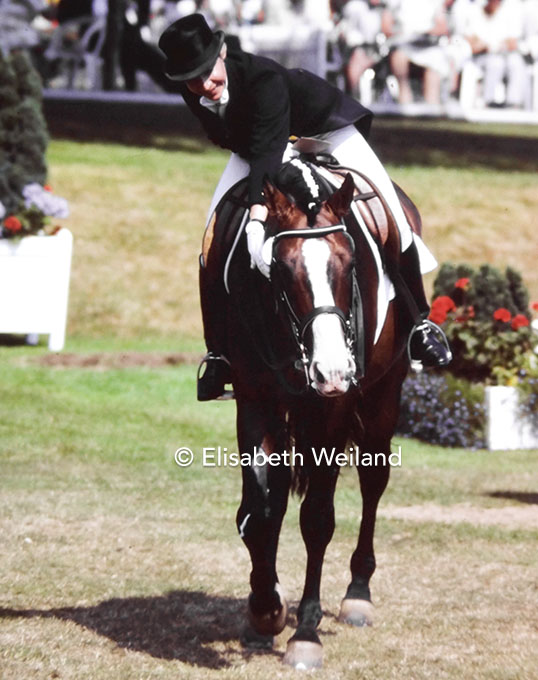
With 33 points leeway both were clearly ahead of Johann Hinnemann and the Doruto-son Ideaal, but were later disqualified when the stallion tested positive for theobromine, a substance containing cocoa which has a stimulating effect. Even though it was later found out that the positive test came from contamination through the horse’s feed, the medal was lost and Hinnemann got bronze.
-- Text by Silke Rottermann
All photos © Elisabeth Weiland - NO REPRODUCTION ALLOWED !!
Related Links
Scores: 1987 European Dressage Championships
History of the European Championships
1978 World Championships Goodwood Through the Eyes of Christine Stuckelberger
1978 World Championships in Goodwood - Dressage in the Park
An Affair to Remember: the 1980 Olympic Games - Three Perspectives
An Affair to Remember: the 1980 Olympic Games